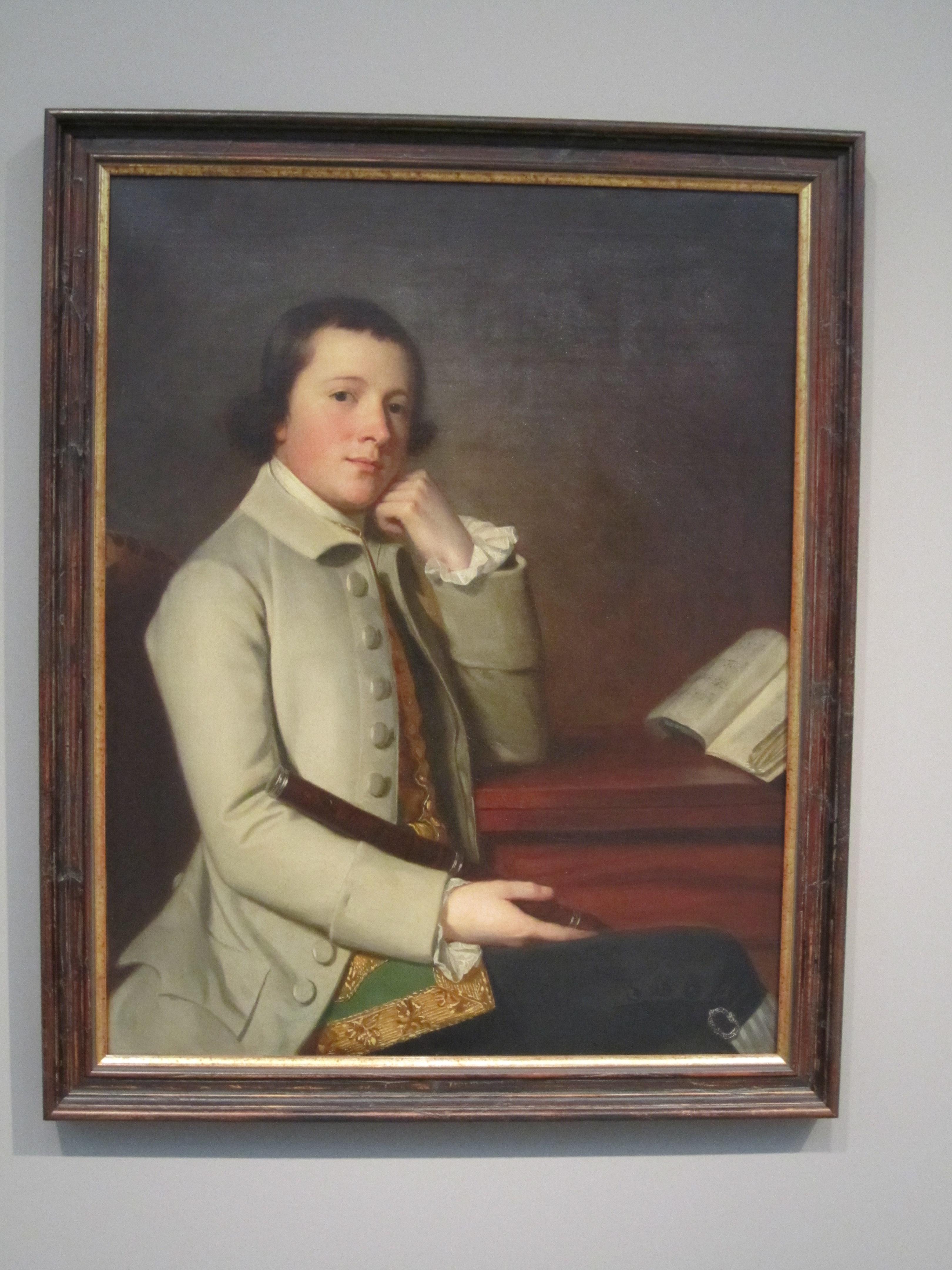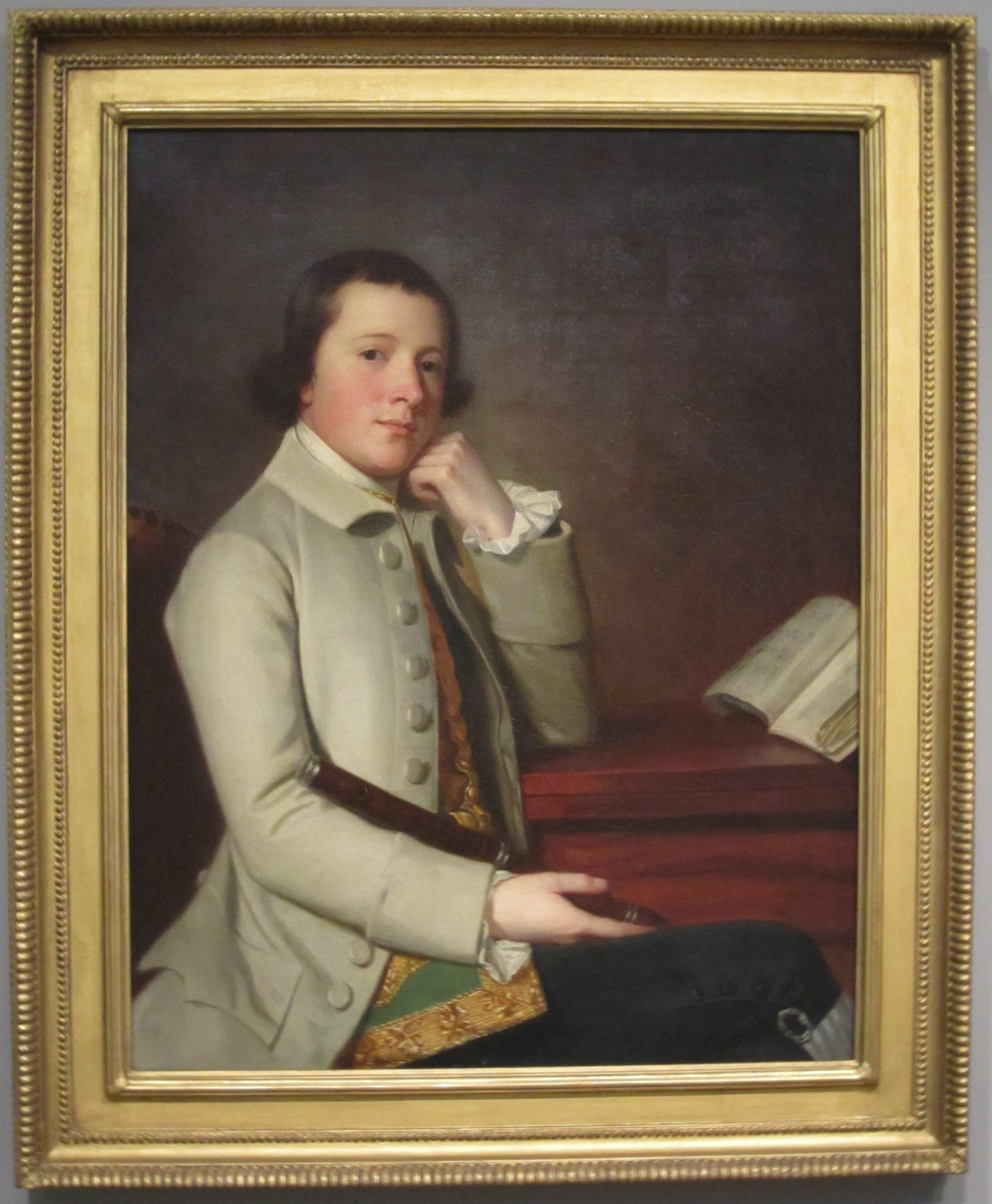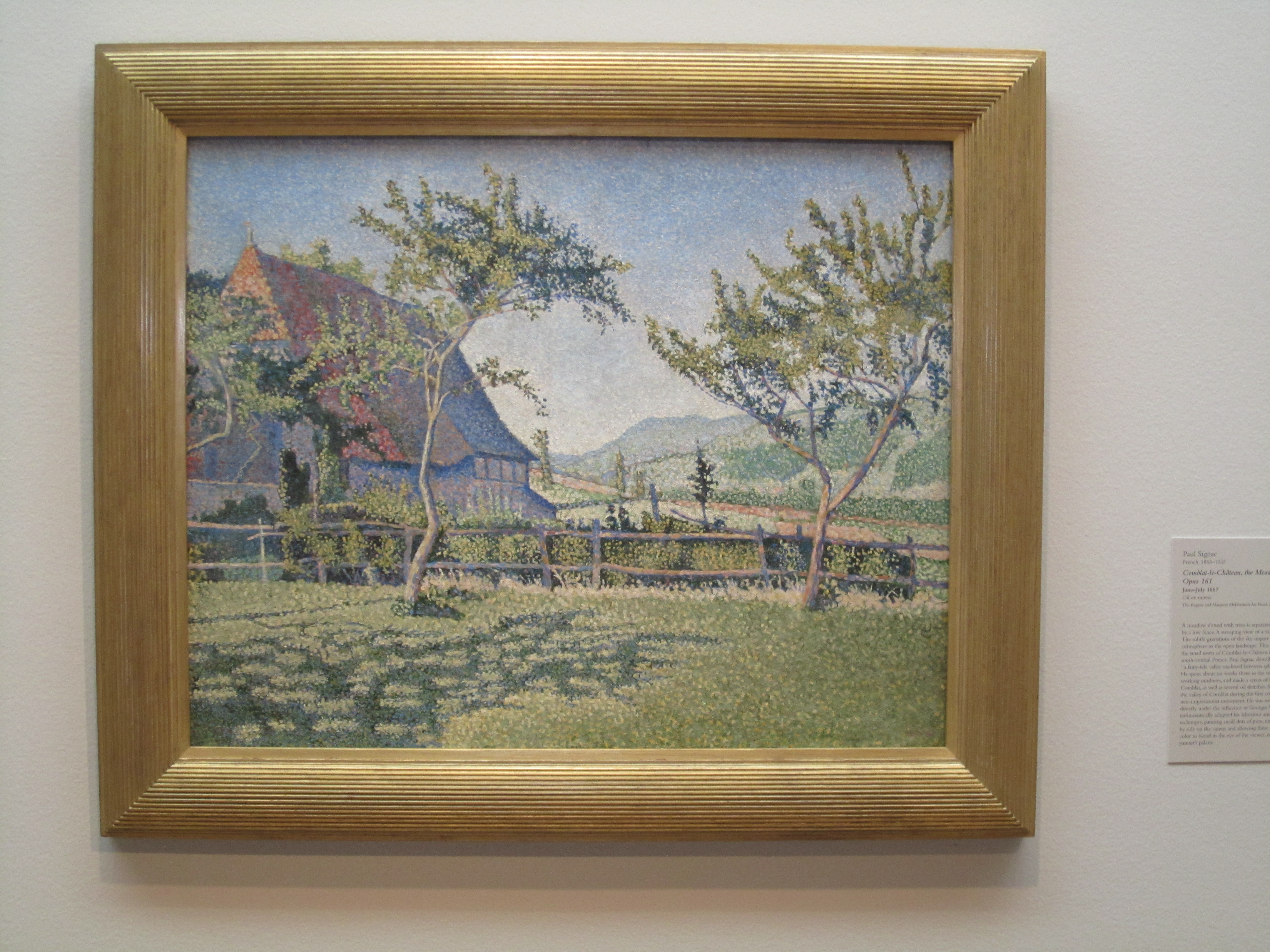This week the prep team installed a pastel by artist Edgar Degas (1834-1917) in the European Art galleries for a special viewing through April 15. Ballet Dancers on the Stage joins two other pieces by Degas currently on view—a bronze sculpture titled The Masseuse, and a small etching, Dancer on Stage, Taking a Bow. Works on paper like Ballet Dancers on the Stage require long periods of rest in between exhibitions to preserve their light-sensitive materials, so it is always exciting when they go on view.
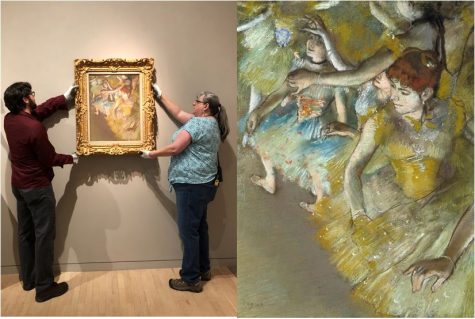
Edgar Degas, Ballet Dancers on the Stage, 1883, Pastel on paper, Dallas Museum of Art, gift of Mrs. And Mrs. Franklin B. Bartholow, 1986.277
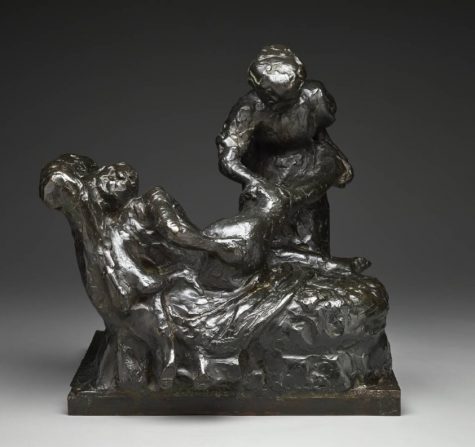
Edgar Degas, The Masseuse, 1896-1911, Bronze, Dallas Museum of Art, The Eugene and Margaret McDermott Art Fund, Inc., 1965.26.McD
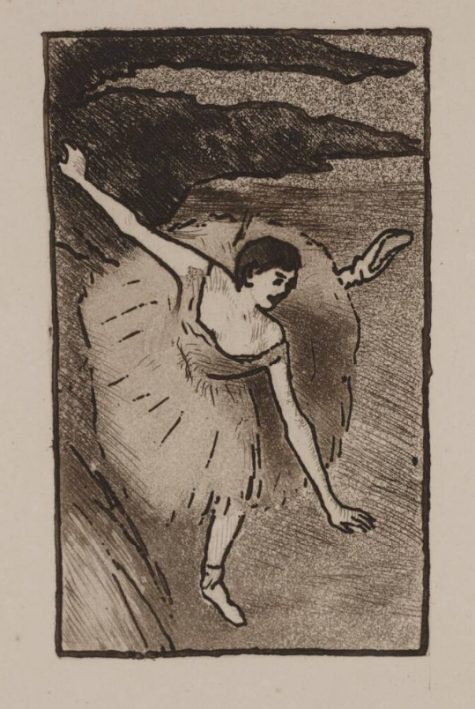
Edgar Degas, Dancer on Stage, Taking a Bow, 1891-1892, Aquatint and soft-ground etching on paper, Dallas Museum of Art, gift of Mrs. And Mrs. Alfred L. Bromberg, 1956.83
Edgar Degas was a French artist working in the second half of the 19th century who has become well-known for his paintings and pastels of ballet dancers. It is important to note that while Degas focused on the subject of ballet for over twenty years, he was interested in depicting many aspects of modern life. The DMA’s collection includes seven works by Degas with subjects ranging from ballerinas and bathers to an opera singer and a masseuse.
Dated 1883, Ballet Dancers on the Stage is a later work that reflects his involvement with the Impressionist group and his interest in Japanese woodblock prints.
Here are a few things to look for when you see the pastel in person:
• Try to count how many complete or partial ballerinas are in this scene and which arms go with each figure. Notice how Degas used brown outlines to define the forms of dancers’ bodies and costumes in the foreground, but he abandoned these outlines in the background and the figures lose clarity. Everything from the pastel’s sketch-like finish, to its varied levels of focus, and its jam-packed composition communicate that this is a fleeting moment of action. Similar to the experience of attending a ballet, we only get the finer details of the dancer who is closest to us.
• It looks like we are viewing the dancers from above and to the right, and within close range. This scene is from the perspective of an abonné or season ticket holder, who would have been seated in a box to the side of the stage. Abonné are supporters of the ballet who Degas sometimes portrayed as men in top hats.
• Notice how Degas has created an asymmetrical composition by tightly grouping the dancers in the upper right section of the paper while leaving the lower left corner open. Beginning in the 1850s Japanese woodblock prints were imported into Europe and they served as inspiration for many artists including Degas. Traditionally, Japanese woodblock artists create asymmetrical, diagonal compositions in which the vantage point off to one side rather than straight on. This 1834 print by Ando Hiroshige, Shono: A Rain Shower, is an example of a 19th-Century Japanese woodblock like those Degas might have seen. Notice the similarities in how these two artists have constructed their scenes.
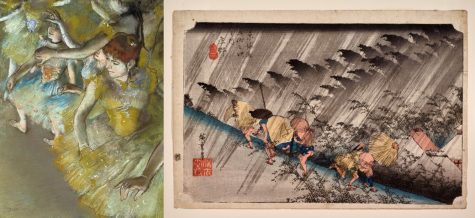
Edgar Degas, Ballet Dancers on the Stage, 1883, Pastel on paper, Dallas Museum of Art, gift of Mrs. And Mrs. Franklin B. Bartholow, 1986.277
Ando Hiroshige, Shono: A Rain Storm, 1834, Woodblock print, Dallas Museum of Art, gift of Mr. and Mrs. Stanley Marcus, 1984.202.46
• The light source appears to be coming from the bottom left, presumably from gas foot lamps lining the edge of the stage. Notice how the lower left corner is lighter and the areas of the ballerinas’ bodies directly facing that corner have strong highlights.
• Degas was a master at using pastels to layer color. Here he uses the color of the paper as the shading for his figures and layers colors like white, blue, pink and yellow to create depth. His repetition of the color yellow in particular carries your eye through the entire scene.
Don’t miss your chance to see this object in person. It will be on view through April 20 and is included in the Museum’s free general admission.
Jessie Frazier is Manager of Adult Programming at the DMA







